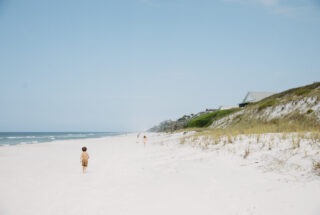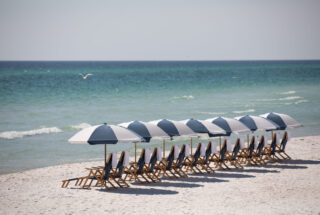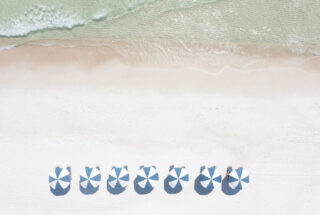Joe Mracek and Brian Stackable sit next to each other on the screen. They laugh before the interview begins and say that this is the most interaction they’ve had in a long time. Their appearances might be a study in opposites. Joe is bald, wearing a black t-shirt revealing tattooed arms. Brian wears a white button-down, sleeves rolled up, glasses. Joe says he’s before been confused as Brian’s “muscle.” They do not have beers together after work. Their back and forth is not seamless; there is no finishing of the other’s sentences. Their partnership is not an obvious one. But it is indeed a partnership. One formed of a balance of strengths and an open-minded give and take.
They share the same goal: a perfect composition. A design that fulfills the client’s needs, their own creativity, the context of the building site. They need each other to make that happen. Their connection is so intuitive that much of their understanding of how they work together has not been articulated, does not need to be. As Brian said, “I didn’t need a partner like me. Joe didn’t need a partner like himself. There is a connectivity, hidden or not. The message is there.” It clearly is. Their respect for each other’s strengths and their allowances for their differences is the backbone of their success and a reflection of their values as architects and as human beings.
Joe Mracek and Brian Stackable sit next to each other on the screen. They laugh before the interview begins and say that this is the most interaction they’ve had in a long time. Their appearances might be a study in opposites. Joe is bald, wearing a black t-shirt revealing tattooed arms. Brian wears a white button-down, sleeves rolled up, glasses. Joe says he’s before been confused as Brian’s “muscle.” They do not have beers together after work. Their back and forth is not seamless; there is no finishing of the other’s sentences. Their partnership is not an obvious one. But it is indeed a partnership. One formed of a balance of strengths and an open-minded give and take.
They share the same goal: a perfect composition. A design that fulfills the client’s needs, their own creativity, the context of the building site. They need each other to make that happen. Their connection is so intuitive that much of their understanding of how they work together has not been articulated, does not need to be. As Brian said, “I didn’t need a partner like me. Joe didn’t need a partner like himself. There is a connectivity, hidden or not. The message is there.” It clearly is. Their respect for each other’s strengths and their allowances for their differences is the backbone of their success and a reflection of their values as architects and as human beings.
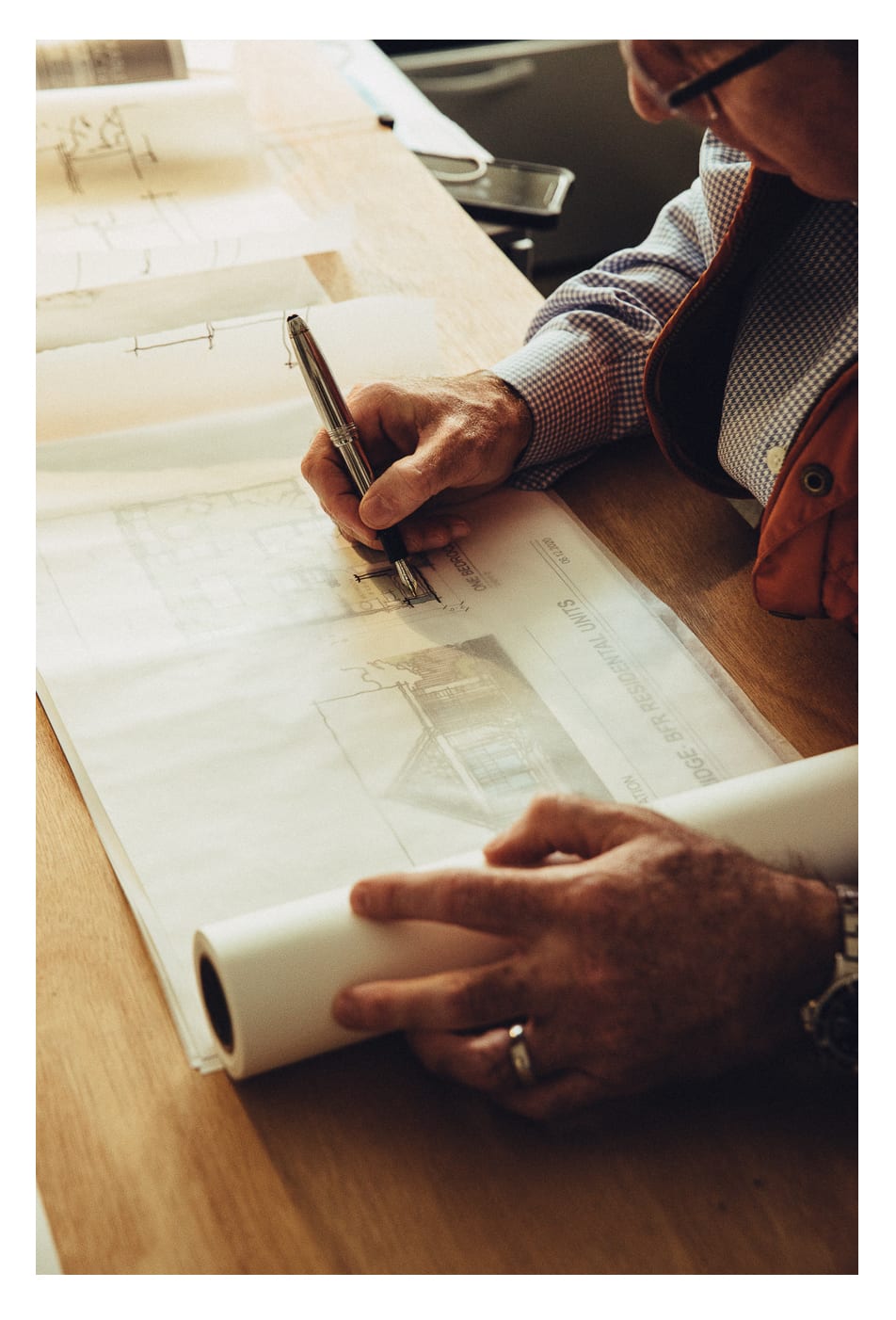
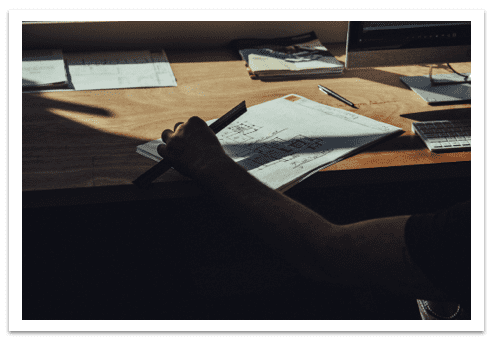
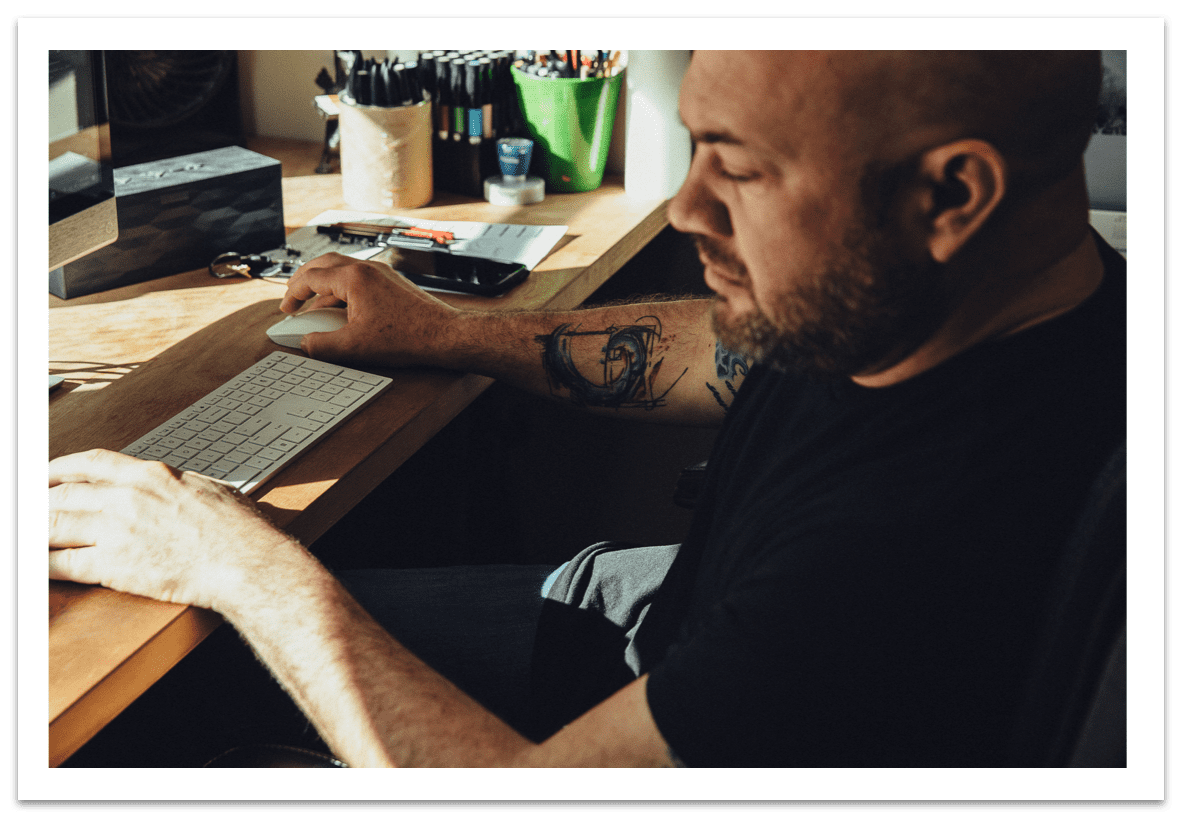
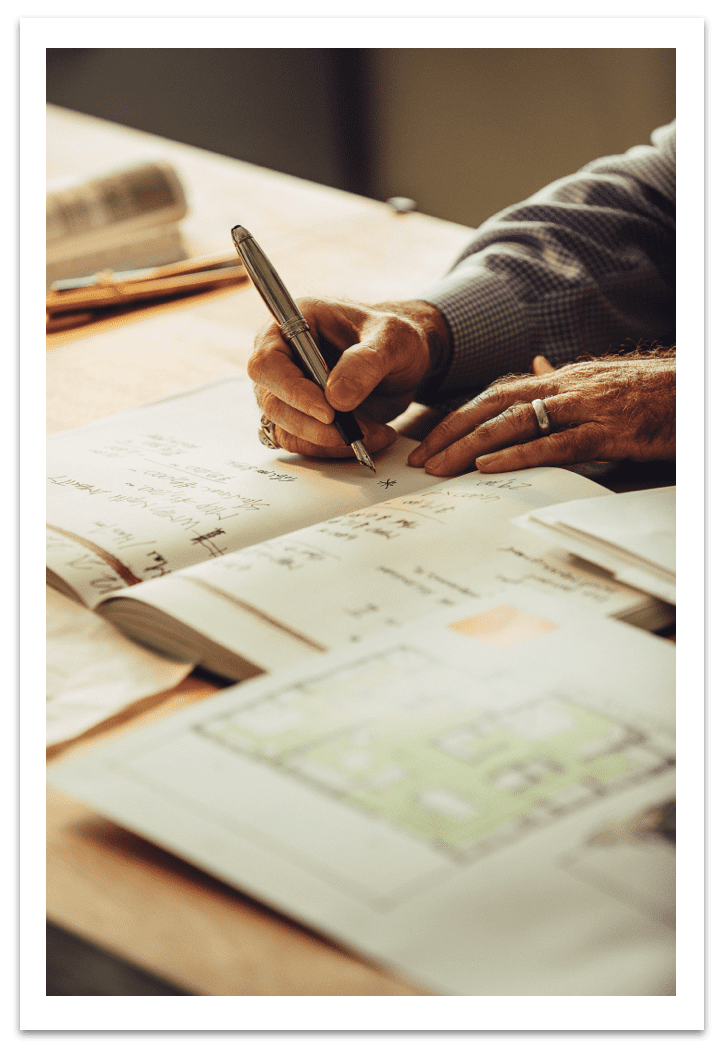
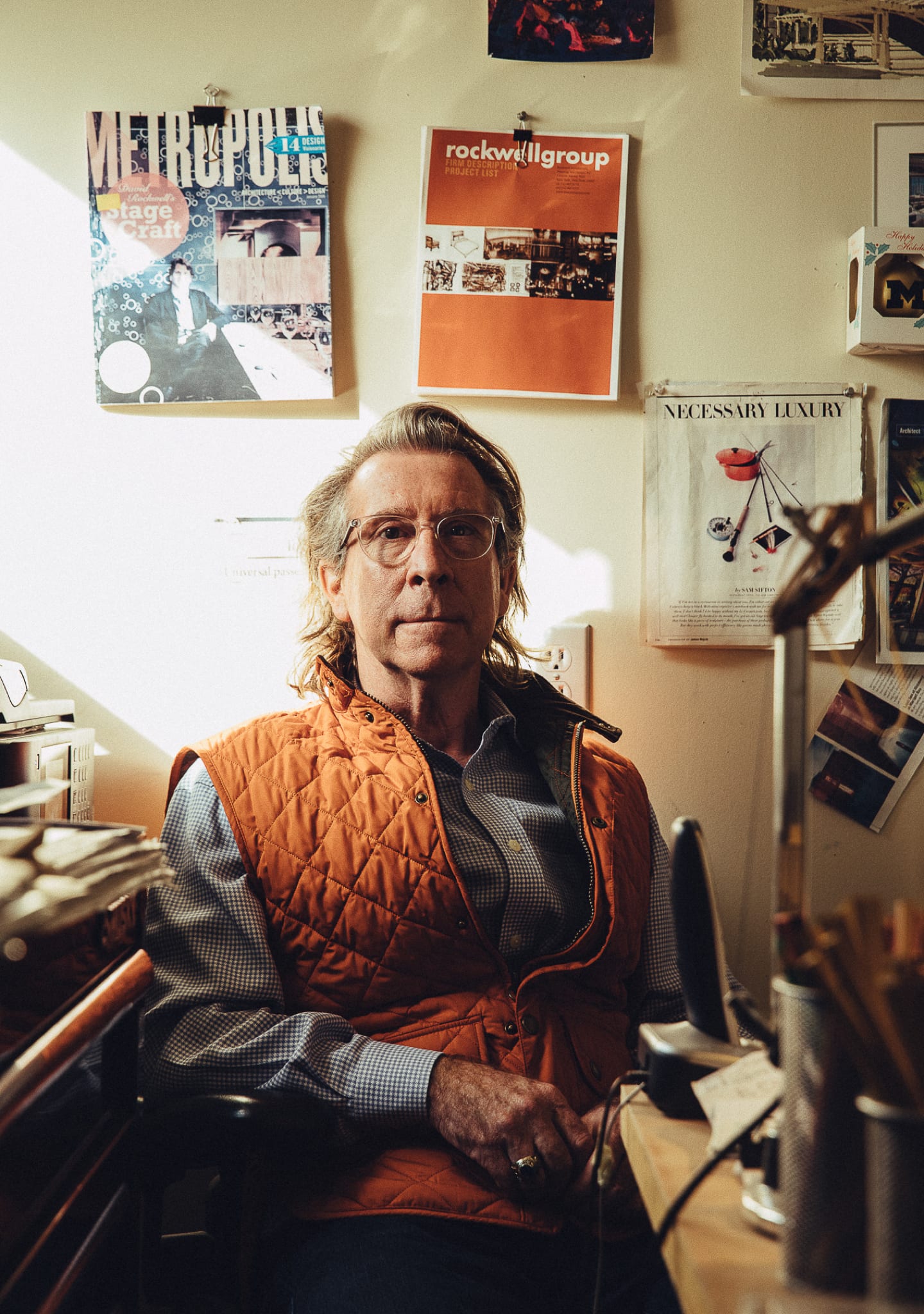
Cassie: What did design look like to you in your youth, and how did your childhood influence the path that brought you here?
Brian: Probably around fourth or fifth grade, I started to have an interest in it. I grew up in Michigan, and there was a place up in northern Michigan where a lot of people were doing second or third beach homes around Lake Michigan. My dad and I and my uncle, we would just pull in and check out these architects’ houses. The top architect at the time, about the mid-eighties, my uncle hired to do his own beach house. I just watched him and took a curiosity in it from there on out. When there were new homes being built in the East Lansing area, I would just pull up and walk the house under construction. At that time my dad was an engineer for a semi company, much like Peterbilt, and I would go on Saturdays with him to the studio, back in the seventies when they had giant drafting tables, giant triangles, big beam compasses, and I would just sit there and play with the tools that they used as a trade. I got exposed to that side of engineering. I carried it all the way through high school to college to where I am now. I’ve never really done anything else, never really thought about doing anything else, which has its pluses and minuses (laughs).
Cassie: So your family encouraged it.
Brian: They exposed it. My uncle was an attorney but through his practice he had hired several architects to do their law firm, interior and exterior of new buildings, a few of his homes. We were very close to him so I would get exposed by him hiring the architects. I would see the drawings in the conference room, things like that. My dad designed our own home, where my mother still lives. That was early high school so we were part of the labor crew. So I also got exposed to the means and methods. I thought this is a really cool attraction, and my dad said why don’t you start taking some drafting classes? Which is kind of interesting because high school drafting classes really don’t lead you into the world of architecture. When you go into undergrad architecture, drafting is the last thing you ever really do but it’s just that whole world of being exposed to it. That’s where it started.
Cassie: And you, Joe?
Joe: I’ve always been into the arts. Growing up, my mom used to take me to work with her and anytime I’d get bored she’d tell me to draw her something. That’s all I ever did—I’d go to work with her and draw, and a lot of times it was the beach, or it was sailboats, or really anything to do with the ocean. She pushed me in that direction all of my life. I’ve always loved painting. I took all the art classes throughout high school, and after that I took drafting classes. I was really good at drawing, and back then everything was done by hand so I got into that. I just took to anything artistic so I started playing music. I went from art, drawing, painting to music so it’s just all these different creative mediums and one day, I think I was 20 or 21, I got up fed up with being a draftsman and went to Auburn and just kept going from there. It’s kind of like I just found my favorite medium to express myself in designing and architecture.

C: Where did you grow up?
J: I grew up in a small town in Alabama, a very small town just north of Montgomery.
C: You said drawing, music, painting… Was it buildings that you noticed that turned you on to architecture?
J: It’s interesting because it all kind of relates. Playing music and writing music and painting is the same thing as designing and creating a home, a building. It’s just a different medium.
B: Composition.
J: Yes, a different type of composition. And honestly I didn’t realize that until I got into architecture school and I started studying it. I realized I’ve been doing this all my life.
C: Cool. So, you’re not Southern, by birth, Brian, but it could be interesting to hear what you have to say. Talking about the South— its particular vernacular and landscape, idiosyncrasies, your history here. How has it influenced your work? Has it even?
B: I left New York in 2002 and came down as a developer for The St. Joe Company. I was working alongside a bunch of other Southern architects. I was helping to write the narrative as the developer about what these places would be and I had all of these other architects to backfill it with details particular to this very unique part of the South. They had these things in their toolboxes, and I learned a lot of lessons, took a lot of queues. I think about porches, the Southern interpretation of them. We hang out on porches up in Michigan, but the Southern tradition is different. The scale, material, event, the history of it. Joe, being of the South, already had that tendency, that vocabulary. There’s a great richness in this part of Florida. For our clients, sometimes we have to explain about plant pattern. There’s a huge range of greens, from the palmettos to the long leafs and we play around with all colors and hues of green. I draw from this richness of palette and the uniqueness of the area. The big overhangs to protect yourself from the late afternoon July and August sun. All that stuff comes into play in how we work. Alys Beach came with its pattern book and design vocabulary which is quite different. Joe and I have been doing this for awhile – together and also separately – we have a pretty good toolbox and vocabulary now; we’re very adaptable.
C: Anything to add to that, Joe?
J: That was pretty long-winded and covered it. (Both laugh.) I guess from a more personal standpoint… Growing up in a small town in central Alabama, I didn’t like it. I was always bored, I was always trying to find something to do. I always thought I’m going to move to a city, I’m going to do great things, and as I’ve gotten older, I’m just, I don’t want to be in an urban area. I love the South, I love the country, I love the wide open spaces. I love the simplicity of a Southern home, a Creole cottage. I love the elegance and simplicity of them. And I feel like we fit in really well with the vernacular here on the Panhandle. It’s the style that we love to do. It makes this not really work. It’s fun.

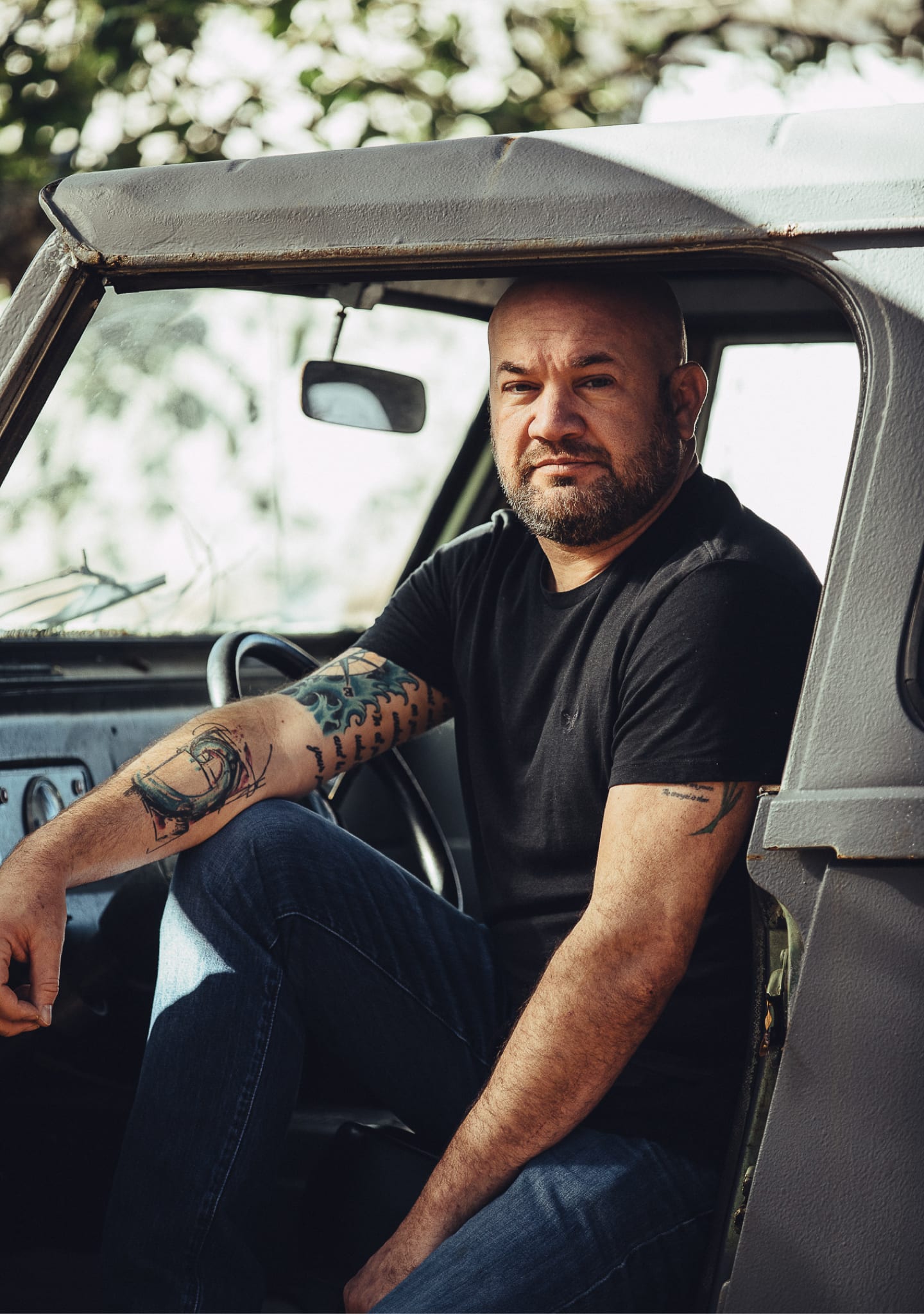
C: Well, and it’s what comes naturally to you both it seems. Brian, you got into this a bit, but my next question was about the path that led to you two working together. Can you tell me a bit about that.
B: I’ll make it short.
J: I was just kidding about that. (Both laugh.)
B: I’d been here a few years with The St. Joe Company when the economy turned in 2008. We downsized to the point that my whole team was gone, and eventually I was gone. My family didn’t want to go back to New York or Las Vegas or other places where there was still economy going. I grew up in a small town and I fell in love with this area. You can imagine, September was great because everybody was gone. So, I opened an office and Joe called looking for work. We met and he started working with me. We hit it off. The photographer that came down for this article was like, let’s go out for beers afterwards. Joe and I don’t do that. As partners, we’re business. He has his life and I have mine, that’s just not what we do. But from day one we connected and so I restructured the firm four years ago and was having a challenging conversation with my ex-partner and I think I texted Joe on a Saturday and said hey you want to put your name on the door with me? I just made him a partner. He was super valuable, super talented, has a great work ethic, and we balance each other perfectly.
J: It was almost fate. I had moved down here from Montgomery where I was working for a large commercial firm. I was laid off during the downturn of the economy so I started doing freelance work everywhere I could, which is how I ran into him and it just ended up that I enjoy designing and producing and working on drawings and he’s been here 20 years and has all of the connections and it was just sort of boom, a perfect match.
C: Do you work together on projects or do you each have your own?
B: It’s a collaboration on all levels.


C: How do you think and work differently and how do you do so similarly? Do you have different tasks or is it a meeting of the minds?
B: I think it’s a hybrid. I’ve been fortunate to have met a lot of people having been here for 20 years. On the front end, I go after the clients and do the proposals but when it comes to sitting down and doing design I may take an early pass at it because Joe is running the other side of the studio. But I can take my sketches, be it elevation or plans, and turn them over. I’ve never been the person who says you’ve got to follow what I do. Joe’s going to enhance it with his own vocabulary and we’ve been successful that way. I often think, I would have never come up with that solution (that Joe did) and I think that’s the balancing success of us is that neither of us says it has to be our way. We both know, we’ve probably never openly said it until now, but it’s an open table on who comes up with the answers. If he gets there or I get there, doesn’t matter.
J: The way I see it… we’re also learning and figuring things out. I may say this is the best solution and then Brian may say have you looked at this or that and I may see that his is better. It’s just a matter of being open. We’re both in this to get the best, most cohesive, perfect design for our clients. And we’ll do whatever it takes to get to that point, no matter where the conception comes from.
B: We’re both equally strong on conceptual design. Joe can do composition as well as I, and vice-versa. Joe is younger and stronger on the computer, on the technical side. He knows details with his commercial background. He can put together a strong set of plans. Our getting iPads is a huge deal around here, especially for me.
C: It does sound like fate though. I don’t think you often find that kind of symbiotic relationship, that open give and take.
B: When we do get credit, it’s us. It’s not what I did or he did, it’s the two names on the door.
C: That’s wonderful.
B: We do our best to be sure at the end of the day that nothing goes out the door without our both seeing it. And most definitely Joe seeing it. (Laughs.)
C: When designing a home, how do you relay a sense of place or story? Where do you begin? Is it with knowing your client? Is it with understanding the landscape?
J: It’s a little bit of everything. The site, what the client wants and is looking for, what their desires are and how they want it to look. I don’t know if this will sound cheesy, but I like to do abstract painting. And when I do abstract painting, I may throw some paint somewhere or do something and then I intuitively react to it. I follow that intuition throughout it until I feel like it needs to stop compositionally. In a way, architecture is the same way. For example if we go to Alys Beach, the first sling of that paint is the guidelines for the site, what the client wants and other aspects like that. Then you come in and you start drawing and you start to react to all of that and you know sometimes it takes a minute. I think okay, I have to stop, I’m stuck, and I have to put it aside and go do something else for a day and come back refreshed to look at it and see it again. It’s a long process but I think that’s a good analogy because it’s reacting to all of the parameters you’re given and being as artistic and creative as possible inside that box and finding the perfect composition for Alys Beach and for your clients.
C: Interesting. In doing this interview series, I’ve had a few different reactions to these types of questions. Some people have super romantic ways of talking about designing a home. I’ve seen both sides and understand both sides. I’m curious if you have that romantic inclination. Is there a kind of poetry in fulfilling some deep need in your client or are you looking at it from the design, more technical perspective?
J: Both.
B: I’d say both. Now that we’ve gotten our brand out there through a lot of work in the last five or six years, now people are starting to recognize our work and come to us because they saw a certain project or unique detail. We’re going to be great at spatially laying out a client’s house. Emotionally we’re attached to getting them what they most want, which includes wanting something cool, something unique. They want their home to be recognizable on the street. We know how to get there. There is an emotional level.
J: You have to find the balance between what your client wants and what you as a designer can do and want to do.

C: I think that’s a really honest answer, thank you for that. I’m in Louisiana, if I asked you to design my home, how would the process compare to designing a home in Alys?
B: We look at context. Not so much what the neighbors left or right have done because that could be good or bad architecture, but we begin to look at the context of the site. Certainly Alys Beach has the parameters that you have to design within, but that’s the fun challenge. Plus the whole DNA of doing a big concrete house, the details of it. But also trying to capture the right sunlight in the courtyard. We have to create spaces within. What we’re doing in Montana is big, wide, open, heavy timber construction. We’re learning to develop our own vocabulary for that place. Taking things we like to do and expressing it out there. We use every new place as a new opportunity.
C: Do you have a sense of what gives a home longevity or a sense of permanence? Is that something you value in your designs and, if so, how do you think you get there?
B: That’s a tough one.
J: She’s got all these tough ones.
B: I think what we try to achieve is timelessness. It’s not here’s the latest trend or phase. If you take a collection of our projects as a whole you’ll see that it’s the style that we as individuals have developed. Neither one of us is trendy even in the sense of how we live our own lives.
J: I think timeless is a good word. I like that word. Timeless design is the legacy. Things get old and things change and I think that’s kind of good. We do certain things and we think what will this look like down the road. And our goal is to think, down the road this will be gorgeous. We kind of think forwards and backwards, try to look ahead and see what’s going to happen, what this building will look like and how it’s going to feel. It’s okay for it to feel that it’s been there a minute.
C: You talked about how you were a creative person, Joe, and how one medium led to another. I’m wondering how you continue to grow yourselves creatively. From drawing to travel to cooking to what you
read – what are the ways in which you keep that wheel turning?
J: Another interesting question. You know, to me one of the great things about architecture is you’re not just learning a skill or a trade, you’re learning a lifestyle. And all those elements of design, you can find those and interpret those in anything you do. Even cooking. One of my thesis professors made everyone write their own recipe and trade it with someone else and have that person cook it and see how it turned out.
C: To make sure it is building upon itself?
J: Right. Architecture is more than just buildings and drawings. It’s immeasurable. You can put it into your life and use it in so many different ways. Everything from cooking, drawing, painting, anything.
C: It all relates to each other. There’s no real separating it all out.
J: It can all be interpreted through the design mindset, the architectural mindset. Writing music, there’s different layers to music. There’s different layers to architecture. They flow in certain ways, they all have rhythms. Such is life. It’s more of a holistic thing than just a building.
B: I would say what helps center me is fashion. Part of my thesis in grad school was doing a fashion store and the narrative was to do the door handles, the tables, the display and to look at fashion and fabrics and how it all goes together. Look at how fashion and clothing could create folds and seams. I had a cool conversation about ten years ago with Billy Reid that I go back to a lot. He was just beginning his brand back then after having huge success working for other companies. And we don’t talk as much anymore but I still follow him, I look at his clothes, his details as a fashion designer. Another thing I find centering is fly fishing. I learned how to fly fish young with my father and really the process, the detail of the fly rod, the fly, the whole process and sequencing from casting on. You get in the water that morning and in your head there’s already a narrative of how the day’s going to unfold and I think that’s how I look at new projects. Joe has music and I’m one of the few architects who doesn’t. My dad had to beg the band teacher to let me in. My girls tell me they don’t even like me to sing in church. My brother and dad are French horn sax players and I couldn’t even play the trumpet. But fly fishing – that whole sequencing and that set of tools that you’re given and how you express it and catch the fish – it translates to what we do in architecture.
C: There does seem to be, for architects, a real connection between everything they do. I’m often impressed by how you all relate aspects of your life to your work and the seamlessness of it. In what both of you have said, there is that and I think you’re really fortunate to have it. So, good for y’all. How do you begin your day? Even through travels or work.
B: Well, with about six hours difference between the two of us. (Both laugh.)
J: I’m kind of a night owl.
B: Joe is still doing all nighters like college. I’m a morning person. I learned early in my career that I needed to be up early to finish a bit earlier and sometimes it’s into the office or sometimes I swing by a job site. We have structure, but not structure. That’s the uniqueness in our profession.
J: I am the night owl, but if I need to be somewhere 6am, I will be there. Typically when I don’t, I get up when I get up, take my dogs out and play with them, get to work.
B: Early on I had to start educating some of our contractors, if you guys need something before noon, you’re going to have to wait. There’s some things I don’t touch. If there’s a construction issue in the field or a certain detail on a drawing, I tell these contractors, you’re not going to get an answer from me at 9am. I’m not making the call without Joe and we’re going to have to wait.
J: I do like to send out surprise emails at 7am. They say, “What? You’re awake?”
B: But then again I can get up in the morning and I’ll have emails from Joe past midnight. But it’s been that way and it’s part of our rhythm. We have very unstructured rules. When we sat down with the attorney at the beginning to structure our partnership, we learned a lot about each other then. She’d ask a question and we had never thought of it that way. It just works.
C: A day of leisure? Where do you go, what do you eat or drink? Basically, when you’re not working, where are you?
J: A day of leisure, you’re going to find me on a beach with a drink in my hand.
C: What drink?
J: I like racecar beer. Bud Light. Tequila. I’m not one of those pinky drinkers. Growing up in Alabama, my family used to come down here all the time. And when I was in Montgomery I always wanted to move here. Now that I’m here, I go to the beach, ride a bike, something outside. That’s leisure enough just being here out in this great weather, having a good life.
B: Same for me, if I’m not working I’m outside. Obviously the beach was a huge draw for us early on. I have two daughters, they’re now through with college, but we used to spend every weekend at Grayton Beach. The biggest thing was getting the beach pass and we still keep it but we’re not there nearly as much anymore. We hit it pretty hard in the first ten years. But I’m outdoors. Fly fishing or anything outside. We still get a kick out of going to our job sites on a Saturday. We still get as excited. Some of these Gulf-front projects, they bring these huge cranes to dig these giant foundations. We’re not engineers but we want to see how it goes together. Still kind of cool, like kids, watching these giant machines do these things. That’s been an attraction in this field and part of our success has been our real interest in it. I have to remind myself in the morning when I come to work sometimes, I take the longer route along 30A and think of how remarkable this spot is.
C: We talked some about music, but do you listen while you design?
J: I mean, yeah. (Laughs.)
B: I do at home, not so much in the office. I’m listening to everything from Sturgill Simpson to the old country and I still have Black Crows, Counting Crows, Guns and Roses in my Spotify lineup.
J: I always love rock and roll. I grew up listening to metal. I still go to metal shows and my brother goes with me and he’s a doctor and I’m an architect and we’re sitting there like hmm..
C: A doctor and an architect walk into a metal show…
J: Exactly. When I’m working, I listen to a variety of different things. I’m hooked on Joe Rogan’s podcast and really anything.
C: What else keeps you going in your daily lives?
B: Besides my family, I’m still grateful for where I live. I remembering growing up and these people coming out of the Midwest to build their second homes on Lake Michigan and bringing their architects with them. And I think, shoot that’s what I’m doing now. Building second homes at a super cool scale and in the environment we’re in. And it takes me fifteen minutes to get home from work.
J: Couldn’t agree more with that. Just being able to live here, work and play here on the Coast, we’re very fortunate.
C: This has been fun. Enjoyed it so much. Thanks for your time.
B: I was a little worried at first. I had read Bill Ingram’s interview who I know well and Scott Merrill’s and these guys have such solid narratives, but Joe and I don’t get so open about it. I thought, shoot, I’m not prepared.
C: You only had to be yourselves— which you were. It was great.
J: We’ve enjoyed this.


